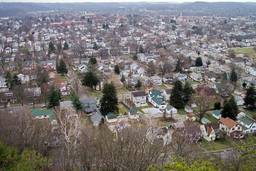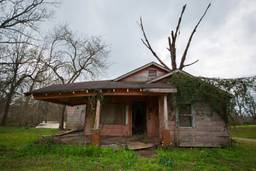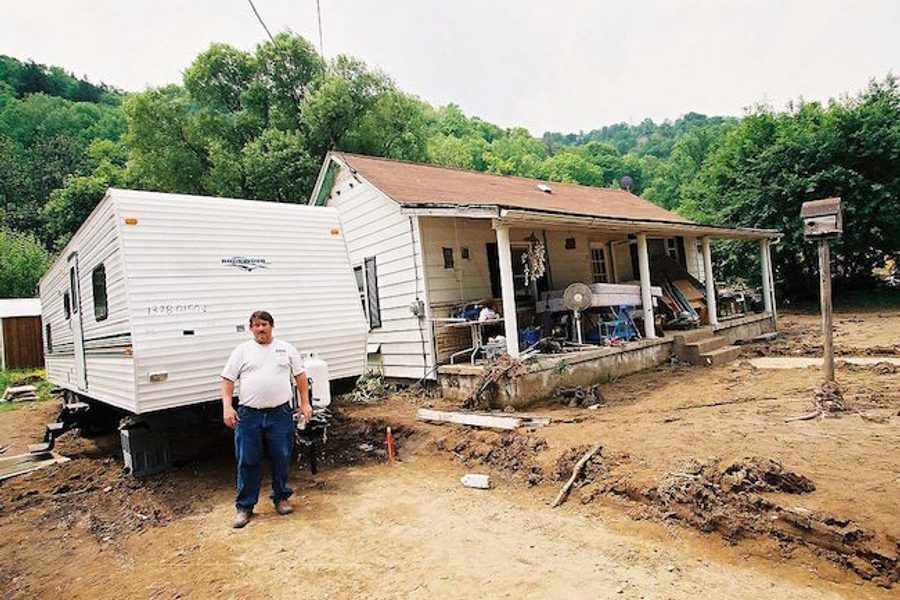
Within the popular American conscience — arguably a close reflection of the mainstream media — there are two favored focal points for discussing the problem of poverty. The first is within the urban, inner city context — often conflated with black poverty — which has held a critical role in American political and cultural discourse throughout most of the past century. The second is the poverty of the Global South: Sub-Saharan Africa, Latin America, South Asia, and the rest of the developing world.
What seldom gets talked about — and when it is, often with irreverent humor and contempt — is the poverty of rural America, particularly rural white America: Appalachia, the Ozarks, the Mississippi Delta, the Dakotas, the Rio Grande Valley, the Cotton Belt.
If you spend time among coastal liberals, it’s not unusual to hear denigrating remarks made about poor “middle Americans” slip out of mouths that are otherwise forthcoming about the injustices of poverty and inequality.
Yet, since the 1950s, Americans living in non-metropolitan counties have had a higher rate of poverty than those living in metropolitan areas. According to the 2013 American Community Survey, the poverty rate among rural-dwelling Americans is three percent higher than it is among urban-dwellers. In the South, the poorest region of the country, the rural-urban discrepancy is greatest — around eight percent higher in non-metro areas than metro areas.
So why is the poverty of rural America largely unexamined, even avoided? There are a number of explanations.
Sociology and its urban bias
American disinterest in the poverty of its own pastoral lands can be traced across the Atlantic Ocean and back several hundred years to the origins of social sciences in academia. The rise of these disciplines coincided with the Industrial Revolution and the mass migration of peasants from the country into cities. As an effect of these circumstances, the leading theorists of the era — Karl Marx, Emile Durkheim and Max Weber — were primarily concerned with living conditions in cities and industrializing societies, setting the foundation for the metro-centrism that continues to characterize the social sciences.
“In academia, there’s an urban bias throughout all research, not just poverty research. It starts with where these disciplines origins — they came out of the 1800’s — [when] theorists were preoccupied with the movement from a rural sort of feudal society to a modern, industrial society,” Linda Loabo, a professor of rural sociology at Ohio State University, tells Rural America In These Times. “The old was rural and the feudal and the agricultural and the new was the industry and the city.”
Similarly, the advent of the study of poverty in sociology departments across the United States during the Progressive Era centered nearly exclusively on the metropolis. In the 1920s and 1930s, the University of Chicago’s influential School of Sociology utilized the city of Chicago as a laboratory for the development of the discipline. According to an article published in Annual Review of Sociology by sociologists Ann Tickamyer and Silvia Duncan, poverty in the city was “one of the many social pathologies associated with urbanization, mass immigration, and industrialization” — issues that were at the heart of the Progressive movement.
Lobao explains that around the same time there arose a “small,” but “vibrant” contingent of rural sociologists at Penn State, University of Wisconsin Madison, Cornell, Ohio State and University of Illinois Champaign-Urbana. But the role of rural sociology, she says, has remained perpetually marginalized, a “residual category” outside of the mainstream discourse. Today, it is not uncommon to see rural sociologists placed into colleges of agriculture, where corporations like Monsanto rule, rather than sociology departments — pushing them further into the recesses of the social sciences.
“The bias is so overwhelming in terms of the urban,” says Loabo, “that the rural is just sort of neglected and not viewed.” Loabo formerly served the as the president of the Rural Sociological Society at Western Illinois University another important hub for rural sociologists over the past 70 years.
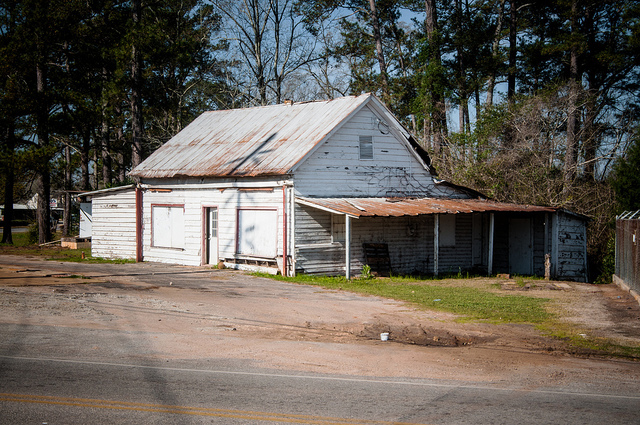
A vacant building sits near the side of the road in Forest City, Arkansas. (Bob Nichols/U.S. Department of Agriculture)
Rural and urban poverty in America
Rural and urban poverty are similar to the degree that both occur when people do not have access to jobs — specifically ones that pay a living wage (i.e. enough to provide themselves and their dependents with basic necessities like food and shelter). Many of the causal factors for poverty, however, are exacerbated in remote areas where the job and labor markets are smaller and less diverse, and communities lack the human capital of city economies. Often a single industry (in some cases single employer) will dominate a vast region.
The geographic distance between some rural communities and higher education institutions, as well as technical and vocational schools, is also a factor. According to U.S. Department of Agriculture Economic Research Service, 20 percent of non-metro residents complete their college degrees compared to 30 percent in metropolitan areas.
Similarly, when it comes to providing social services in rural America, spatial challenges arise in making those services accessible and visible to a remote public.
“The repertoire of services available to [rural people] is smaller,” Lobao says. Her research indicates that 50 percent of metropolitan counties provide subsidies for emergency medical services, while only 30 percent of non-metro counties do. Similarly, 30 percent of metro counties make elder care available, but only 20 percent of non-metro counties do. And 25 percent of metro counties provide childcare care, but only 16 percent of non-metro countries do. Each of these deficits contributes to the higher rate of poverty that we see among the rural poor.
White poverty, a negative feedback loop
Lisa Pruitt, a law professor at the University of California at Davis, studies the intersection of law and rural livelihoods. She also runs a site called the Legal Ruralism Blog, where she writes about the problem of rural American poverty. Pruitt grew up in a working-class rural Newton County in the Ozarks of northwest Arkansas. She tells Rural America In These Times that one important misconception about rural poverty is that it is an exclusively white problem. While the majority of rural Americans struggling with poverty are white, Pruitt says, the racial makeup of the rural poor is far more diverse than the image most Americans realize.
[If you like what you are reading, help us spread the word. “Like” Rural America In These Times on Facebook. Click on the “Like Page” button below the wolf on the upper right of your screen.]
“We tend to associate rural poverty with whiteness,” Pruitt says. “When we think about rural poverty, most associations with rural poverty are with white populations and in fact, that is true to some extent but it’s actually far from being monochromatic.”
The demographics of poverty in rural and urban America are quite similar. Though whites make up the majority of both metropolitan and non-metropolitan populations in the United States — resulting in a higher numbers of whites living in poverty — poverty rates throughout rural America are much higher among the rural minority population. According to the 2013 American Community Survey, 40 percent of blacks living in non-metro counties fall below the poverty line, compared to 15 percent of whites. Poverty rates among non-metro Hispanics and American Indians are also considerably higher than they are among whites.
This popular association between rural American poverty and whiteness is key to understanding why the media, and liberal America as a whole, doesn’t talk about rural American poverty. While black poverty in the United States is attributed to the legacies of slavery, Jim Crow, housing discrimination, incarceration, and other forms of institutionalized racism, we have no national narrative that explains white poverty. As a result, there is an implicit belief that whites — who have benefited from all of the advantages that come with being white — don’t have a good reason to be poor. In other words, that when whites live in poverty, it is their fault, or even their choice.
Since the 1960s, the current U.S. economic system has had as a constant feature 15 percent of the population living below the poverty line.
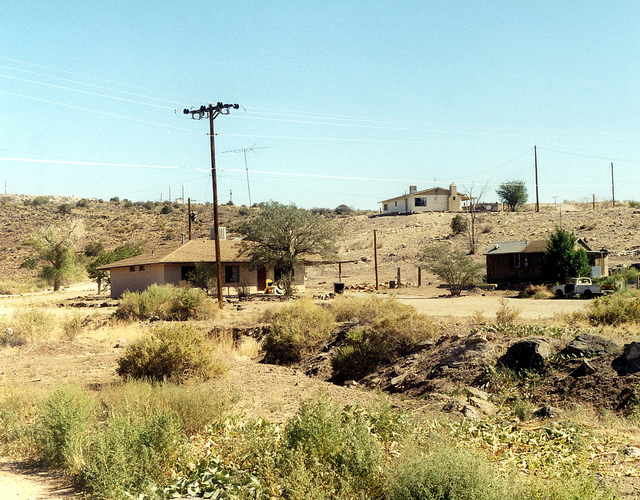
Peach Springs, Arizona on the Hualapai Reservation has a poverty rate of over 36 percent. (Flickr/Don Graham)
“For better or worse,” says Pruitt, “when we talk about poverty, we focus on black poverty, and we focus on Hispanic poverty. We’ve collapsed our nation’s poverty problem into our nation’s racism problem and it leads us to turn a blind eye to rural poverty.”
One of Pruitt’s overarching arguments is that this political polarization between the liberal mainstream and the rural poor is self-perpetuating, and will only worsen with time — as the rural poor are “excluded from the pipeline to power.”
“There is such a disconnect between the people in power in this country and the rural poor. It’s a negative feedback loop,” says Pruitt. “If you’re deciding who you are going to admit to Harvard and you see they grew up socio-economically disadvantaged from rural America, the knee-jerk reaction is, ‘We don’t want those people among us. They’re racist. They’re uncouth. They’re unsavory.’ ”
The 2016 election
Though the left has all but cornered the subject of poverty and its myriad dimensions, the fact that rural Americans tend to espouse conservative positions on social issues like abortion and gay rights does not make the liberal media or Democratic candidates any more sympathetic to rural American poverty. And if the 2008 Presidential Election is any indicator, poor rural Americans, especially whites, feel increasingly at odds with liberal politics and liberal candidates.
“I think the assumption is that rural white voters are racist and illiberal and intolerant,” says Pruitt. “And so there are all sorts of incentives to distance ourselves — for the Democratic presidential candidates to distances themselves — from rural whites. I think that most rural white voters are pretty alienated from politics generally, and the Democratic Party in particular.”
In the upcoming presidential elections, both Pruitt and Lobao don’t see presidential candidates Bernie Sanders or Hillary Clinton making much of an effort to rally rural voters. “Does either Bernie Sanders or Hillary Clinton, as the leading candidate, care very much about white rural voters? I would say no,” Pruitt said. “They’re going to talk the talk, but, by and large, with the number of voters you’re talking about, it’s not necessary for a wining equation.”
It should be noted that Clinton does list “Rural Communities” as one of the 24 issues on her campaign website. And in the recent Democratic debate, Sanders attempted to appeal to rural voters in his position on gun control, saying, “I come from a rural state, and the views on gun control in rural states are different than in urban states, whether we like it or not.” Of course, the few minutes spent on gun control were the only ones in which rural America came up throughout the two-and-a-half hour debate.
Yet the left and working class rural Americans have many reasons to forge a stronger relationship — specifically in challenging the authority of corporate America and growing the bargaining power of workers. Lobao, clearly frustrated, says rural sociologists have spent a lot of time thinking about how the left could appeal to rural Americans and often find themselves mired in “platitudes.”
“The one thing that we could stress in terms of social values is the value of building community,” she said. “ ‘Do you like your community? Do you want to build it? Well why can’t we?’ We can try to emphasize building the community, you know, because people identify with their community whether they’re Republican or Democrat.”


